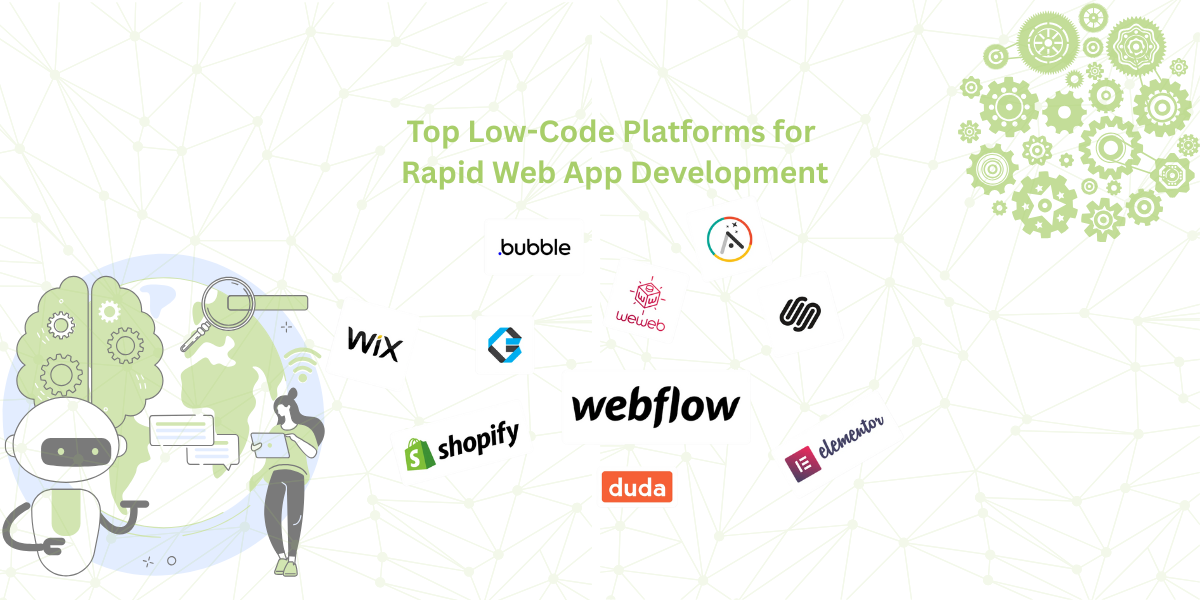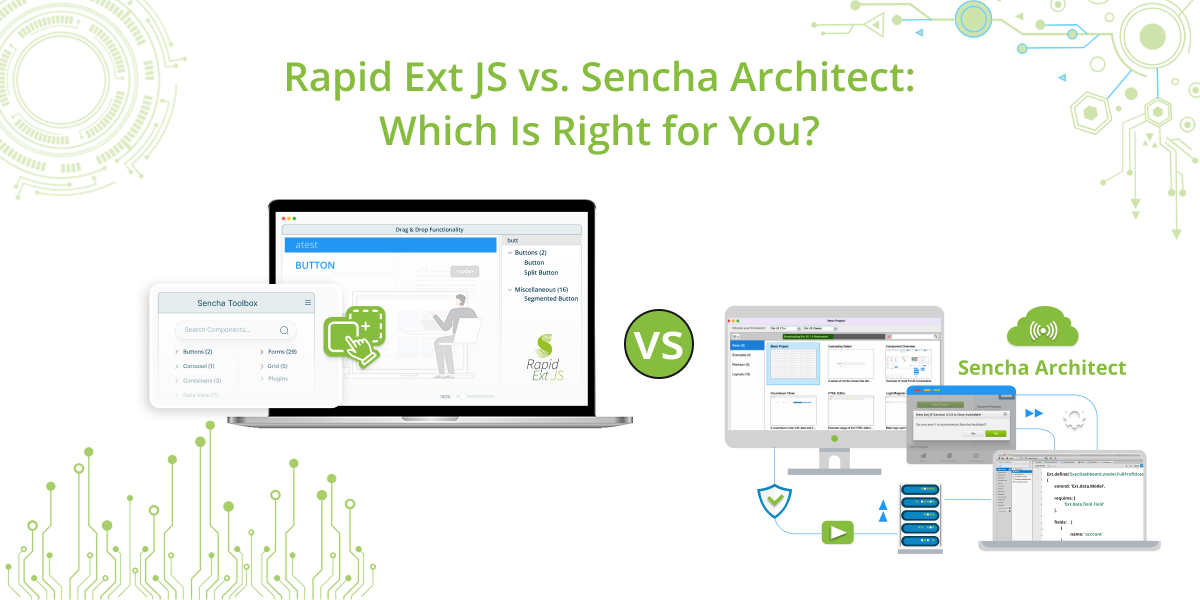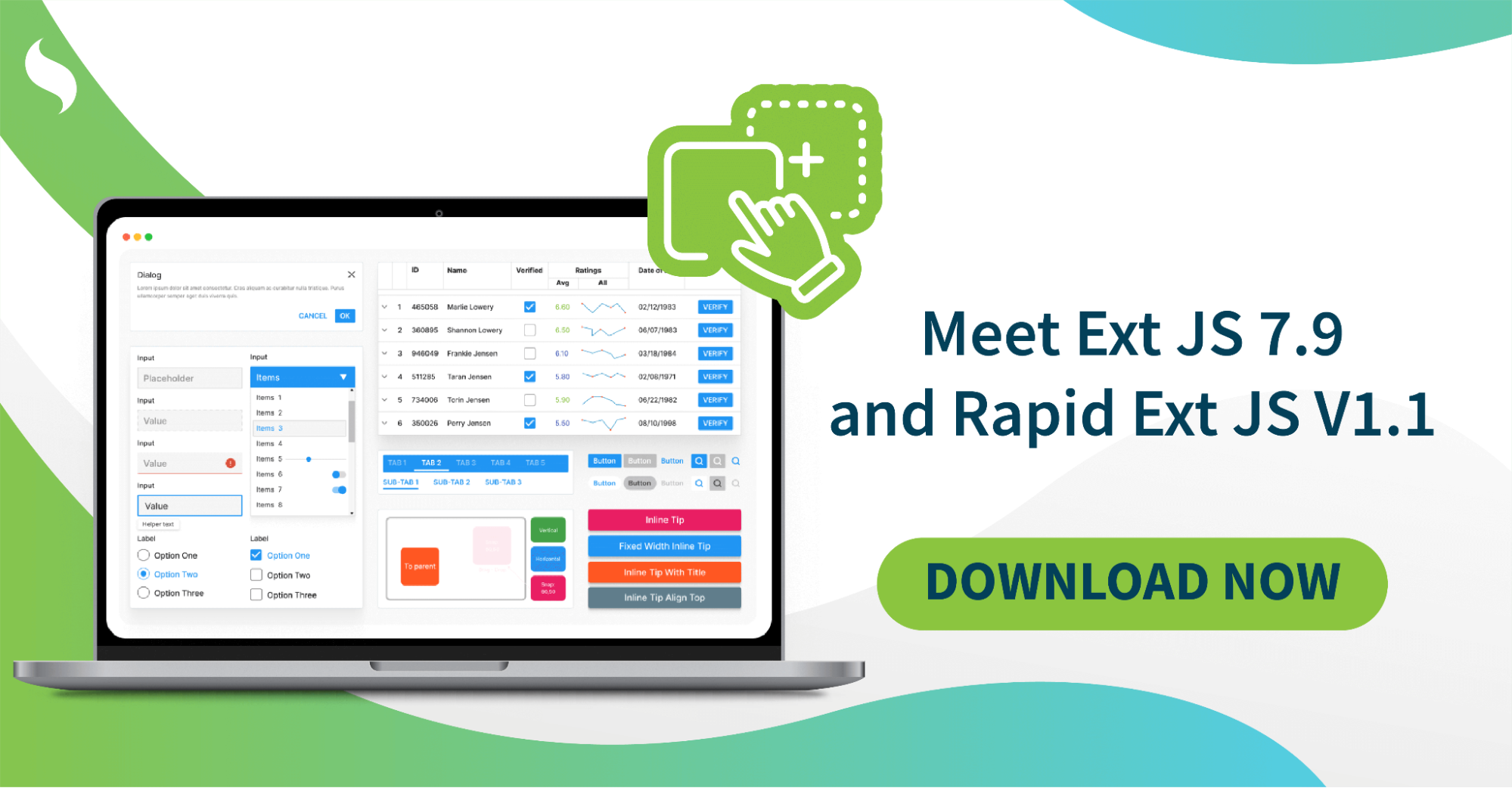Why Ext JS Framework is the Go-To Framework for Building Scalable and Data-Intensive Web Apps
If you notice, you will see that modern web development apps now manage more data than ever. Large datasets are vital for financial dashboards, company reporting tools, or real-time analytics. Ext JS, a popular JS framework built on html css and javascript, handles this efficiently. Its advantages set it apart in web development.

Ext JS framework is a powerful JavaScript tool, designed for scalability, performance, and interactive user interfaces. It offers a complete component library, advanced MVC architecture, and optimizations using a virtual dom. These features boost productivity and simplify complex web development, ensuring user interfaces remain clear, reliable, and easy to maintain, all backed by extensive documentation.
Highlights of this blog are:
- Why Ext JS Is Ideal For Growing & Scalable Applications
- Efficient Management Of Large Datasets
- Pre-built UI Elements That Eliminate Dev Work
- Clean And Scalable Code With The MVC Architecture
- Responsive Design And Cross Browser Compatibility
- Application Defender To Protect From Vulnerabilities
- Speeds Up Interaction And Data Rendering
- How Sencha Ext JS Developers Stay Ahead Of The Curve
Let’s begin our journey now!
Scalability in Web Applications
Scaling web apps isn’t easy. Are you worried about performance dropping with a growing user base? Scaling with traditional frameworks can be tricky. You may face loading times, poor queries, and complex javascript code structures.
Ext JS, a javascript library, solves issues. It makes scaling simpler and more efficient. Its modular design splits your app into reusable components and web components. This boosts overall efficiency and ensures clean code.
Are massive datasets causing issues? Ext JS robustly supports lazy loading and automatic code splitting. It lets you execute javascript code with buffered rendering and server side rendering, reducing load. Your app performs regardless of size.
For enterprise web apps, Ext JS—among the best javascript frameworks—boosts scalability and builds user interfaces.

Handling Data-Intensive Requirements
Consider dashboards, analytics tools, and financial platforms; some apps process vast data, though static site generation often suits simpler sites.
Ext JS is built for data-heavy applications. Virtual scrolling and buffered rendering help. They load only the required data, improving speed and cutting memory usage.
Sorting, filtering, and pagination? These are handled through the server. This maintains smooth operation on the front end. Data binding? UI and backend interactions happen instantly.
If your application needs real-time updates or handles massive data, the Rest API guarantees faster, cleaner, and smoother experiences for your users.

Rich Component Library Of a JS Framework
Why start from scratch? Ext JS, a progressive javascript framework, provides OOTB components for creating web applications. This makes building web applications easier. Grids, charts, buttons, forms and more are available.
With OOTB components, you save time in your development process. Focus on delivering the perfect product, whether for a mobile app or desktop solution. Worry not about UI consistency as all UI components are customizable to your branding.
From basic to advanced UI, all components are optimized for performance. They remain fast and responsive. If you care about aesthetics and want to avoid extra coding, Ext JS has you covered.
MVC Architecture and Code Maintainability
Applications become complicated. Without structure, code is hard to maintain and debugging a nightmare. Ext JS’s Model-View-Controller (MVC) structure, with robust state management, helps.
Everything is managed as one unit using template engines for consistency. It eases the learning curve. Moreover, Ext JS supports MVVM architecture and progressive web apps, integrating models and views for smooth interaction.
Cross-Browser Compatibility and Responsive Design
Your app should function flawlessly on all platforms. Be it Chrome, Firefox, Edge, Safari or even outdated Internet Explorer. You need not write boilerplate code to fix compatibility issues, a common pitfall in building web applications.
With Ext JS, you don’t worry about such hassles. Its component based architecture and support for single page applications ensure consistent rendering across browsers.
Ext JS leverages modern web technologies favored by many web developers. It also integrates robust data binding, one way data binding, and additional data binding methods to sync dynamic content seamlessly.
Enhanced by flex layouts and adaptive UI elements, your app looks stunning on any device. Integrated image optimization techniques further refine visuals on desktops, tablets, and phones, eliminating the need for manual tweaks.

Security Features and Best Practices
Security remains paramount. Ext JS outshines competitors with built-in HTTPS protection, auto-escaping to thwart cross-site scripting, and anti-CSRF tokens against forgery.
Its proven methods protect your data during transmission while reducing vulnerabilities.
Additionally, an active community support network and extensive community support resources offer quick solutions and updates.
Ext JS delivers seamless integration, efficiency, and scalability, empowering innovative solutions for today’s digital demands. Its comprehensive framework adapts to evolving industry standards.
Performance Optimization
No one likes a slow app, particularly when working with large volumes of data. Ext JS ensures your application remains responsive.
Data is only loaded when it is needed. A process known as lazy loading. This helps to lower the app’s load time.
Then there is buffered rendering. Only the information that can be seen is loaded. This performance improves improves memory usage as well.
When users start scrolling, additional data is loaded automatically. Your application will continue to run effortlessly. No matter how large the information to be processed is.
Processing on the server somewhat alleviates the burden. By doing all the complicated work like sorting and filtering at the server. This means the client-side remains quick, even with enormous amounts of data.
Community and Support
The Ext JS has an active community. If you ever get stuck or need advice on some topics, there is always someone. Who is willing to assist. Talso, the company behind Ext JS, offers great support too.
Additionally, there is a wealth of information available to explore and learn from. Furthermore, the framework is consistently updated to keep up with new advancements in technology.
Conclusion
Large data driven web applications can be developed using ext JS framework because of its reliability and speed. Large data driven web applications can be developed using ext JS framework.
Because of its reliability and speed. In addition its modular design aides in pulling together various components. Which makes the app responsive and smooth throughout the ever-expanding dataset.
Its performance features ensure that the app is safe. And its rich component library helps save huge amounts of time.
The app is also cross-browser and mobile friendly. The MVC architecture promotes cleanness, simplicity, and manageability of the code.
No matter if you are developing financial tools of dashboards. Ext JS serves all algorithms of enterprise-level frameworks assisting in different matters. Your application is acomidated without problems.
FAQs
Does Ext JS Framework Support Real-Time Data Processing?
Indeed! Applications requiring live data such as dashboards or analytical tools are perfect use cases for Ext JS UI components. As it supports real-time data processing and updates the user interface as new information comes in thanks to data binding.
What Caching Mechanisms Does Ext JS Use for Performance Optimization?
Like many other applications, Ext JS utilizes client-side storage to enhance its performance. Alongside with virtual scrolling. This type of caching improves the speed of the application. Especially important in data-heavy scenarios as it reduces the load on the server.
Does Ext JS Support Cross-Browser Compatibility?
Yes! Ext JS popular javascript framework works without a hitch on modern browsers like Chrome, Firefox, Edge, Safari, and even on older Internet Explorer versions. You will not experience compatibility issues. Your application will look good everywhere.
Sign Up for free at Ext JS. And take advantage of our framework to create scalable and data-intensive applications.

The importance of low-code platforms in business is growing, with estimates suggesting that they will…

When it comes to developing robust, enterprise-grade web applications, Sencha provides some of the most…

The Sencha team is excited to announce the latest Ext JS version 7.9 and Rapid…










